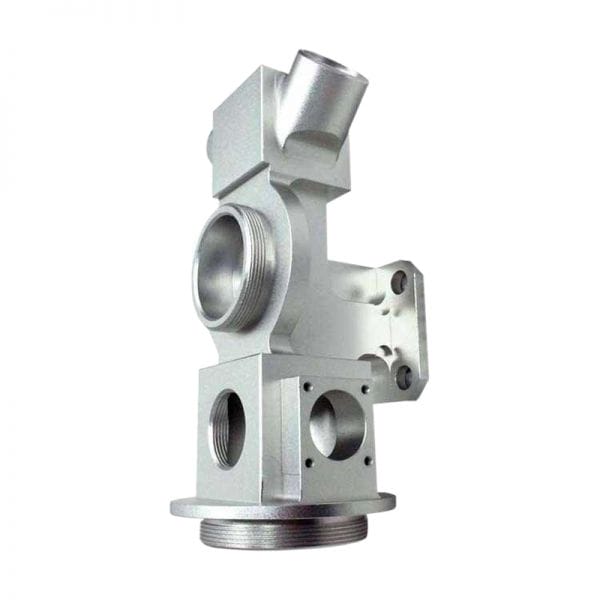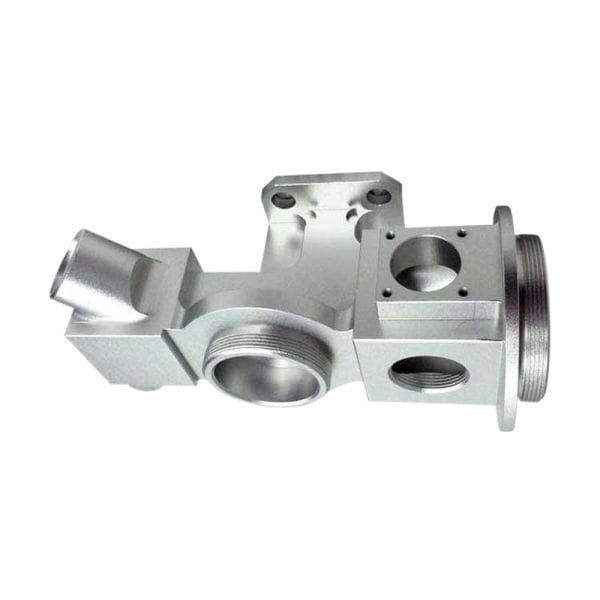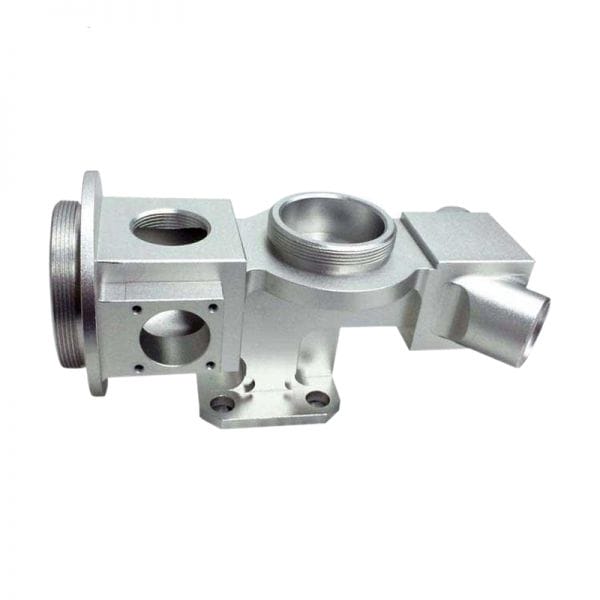Description
[section]
[row v_align=”middle”]
[col span=”8″ span__sm=”12″]
Prouct Material:
casting aluminium. Pressure casting refers to a casting method of pouring molten alloy into the pressure chamber, filling in the cavity of a steel mould, and making the molten alloy solidify to form a casting part. Different from other casting methods, pressure casting features high pressure and high speed.
1.The molten metal fills in the cavity under high pressure and solidifies under higher pressure. Common pressure is within 15 – 100 MPa.
2.The molten metal fills in the cavity at a high speed of 10 – 50 m/s or even over 80 m/s (linear speed of import to the cavity from the flow gate – flow gate speed), so it takes a very short time to make the cavity full of molten metal, just about 0.01 – 0.2 s (depending on the casting part size).
Pressure casting is a precision casting method which produces pressure casting parts with very small dimensional tolerances and very high surface accuracy. In most cases, pressure castings parts can be directly assembled for application without further turning. Even threaded parts can be directly manufactured by pressure casting.
[/col]
[col span=”4″ span__sm=”12″]
[ux_image id=”1301″ image_size=”original”]
[/col]
[/row]
[row v_align=”middle”]
[col span=”4″ span__sm=”12″]
[ux_image id=”1302″ image_size=”original”]
[/col]
[col span=”8″ span__sm=”12″]
Purpose or application scope:
The bottom bracket is a pipe joint with five connection holes and mainly used for fluid or gas delivery. Different bottom brackets are made from different materials, depending on the medium. So, what’s the structure of a bottom bracket? What are its purpose and functions determined by its structure?
A metal 5-way pipe has a main pipe and branch pipes that are located on one side of the main pipe and perpendicular to and connected with it. A valve is set up at the corner of intersection between the main pipe outlet direction and each branch pipe outlet direction, with a round valve plate on it. The valve plate uses a structure of mutual sealing with the inner wall of the pipe cavity when the pipe cavity is closed. This simplifies pipeline setting and reduces the number of pipeline parts used, easy to operate and convenient for branch service and phased supply on each branch. Besides functions of a traditional 3-way pipe, the 5-way pipe provides the double position valve function. That is, either the main pipe or a branch pipe can be set to open or closed state, and the flow ratio between main pipe output and branch pipe output can be adjusted at will. All can be achieved by adjusting the angle of the valve plate in the pipe cavity.
[/col]
[/row]
[row v_align=”middle”]
[col span=”8″ span__sm=”12″]
Machining Difficulties and Solutions of the Special-Shaped 5-Way Pipe
The biggest difficulty of this product is how to improve production efficiency. For CNC machining, this product dimensions (800*200*140) are very large and require long machining travels. From the perspective of product structure, there are a lot of irregular steps and cylindrical surfaces, as well as several positions inside, so a large amount of machining is required. Simply using ordinary CNC milling can neither do the job well nor guarantee quality. Besides, if only a single device is used, the machining of every part will take 48 hours. Such low efficiency is due to the use of solid sheet material for the blanks. Therefore, Yijin Hardware suggests that the product blank be manufactured by pressure casting and a machining allowance of 2 – 5 mm be reserved for each key dimensional position of the 5-way pipe and then custom CNC 5-axis linkage be performed directly for fine machining on the blank which has been pressure cast.
[/col]
[col span=”4″ span__sm=”12″]
[ux_image id=”1303″ image_size=”original”]
[/col]
[/row]
[row]
[col span__sm=”12″]
How Much Does CNC Milling Cost
The cost of CNC milling processing is determined by many aspects. Our Yijin Hardware has perfectly processed hundreds of thousands of orders. We all use manual integrated engineers to quote together. Without the trouble of quoting the machine, you only need to send detailed product drawings. As well as your needs, we can give you the most accurate quotation, and the more detailed the drawings and requirements you send, we can give you the most favorable quotation as much as possible, and it is completely free to get our quotation. Yijin Hardware uses the most advanced CNC processing equipment, over 1000+ CNC processing equipment, mature CNC processing technology, operating experience and engineers are experienced people, so that we always have a very competitive price.
[accordion]
[accordion-item title=”What are the Main Components of a CNC Milling Machine?”]
What are the Main Components of a CNC Milling Machine?
[ux_image id=”1304″ image_size=”original”]
#1 Frame
The frame is the main structure that supports the milling machine and helps to give it stability and rigidity. It usually comes with a base and detachable column/s.
An important part of the frame is the machine headstock where the main spindle is mounted on. The headstock, while important, is often overlooked. If the headstock is not rigid and fails to provide stability and support to the spindle, you could get vibrations and chattering during the machining operation. This could result in machining errors and a shorter lifespan to your cutting tool.
#2 Spindle
The spindle can be considered as the “heart” of a CNC milling machine. It normally comprises a rotating assembly, and a tapered section where tool holders may be positioned. The shaft of the spindle is normally where the tool is attached to, usually via a tool holder.
A motor with different levels of transmission is used to rotate the spindle.
To keep your spindle in good condition over the long-term, various forms of lubrication are used. They may include Grease Lubrications (not suitable for long durations of high speed operations), Air-Oil Lubrications (sufficient for longer cycle runs at higher speeds) or the Hwacheon Oil-Jet-Lubrication (ideal for all conditions – even extreme, long and high speed applications).
Depending on the machine type, the spindle can be vertically or horizontally positioned.
#3 Axes
In general, CNC milling machines have X / Y / Z as well as additional rotational axis or C / A or B (subject to configuration). These can be programmed using g-code in the CNC controller.
#4 Column/s
The columns of the CNC machining center can be single (eg travelling column HiRex 4000 or also C-Frame like HiT 400 / 360; VESTA line including “B”; SIRIUS-650 / 850 / 1050) or double (SIRIUS 1250 / 2500 / L1 / L2). This depends on the level of complexity needed in the machining task.
#5 CNC Control Panel
This is the main “nervous system” of the machine tool. It contains the electronics that helps to control the different cutting actions through programming functions. The control panel has a CNC monitor and programming buttons where data and codes can be punched in. It usually also offers a manual function. For ease of machine operation, the control panel should be easily accessible and within easy reach.
#6 Tool / Tool Changers (Automatic Tool Changer or ATC)
These are either mounted at the column or separately mounted to the machine. The latter is preferred if larger tool changers are needed with 40 up to 300 different tools. Doing so not only helps to save time and effort – it also helps your operators to avoid unnecessary vibrations during operation.
#7 Tool Holders
These come in many different sizes, systems and for various applications. The standard sizes for tool holders are BT 30 to BT 40 and BT 50 (BT refers to the taper angle of the cone on the holder).
(In Europe, the term used is SK 30, SK 40 or SK 50, which has the same angle as BT holder but with an additional orientation groove at the flange. Together with a key-stone mounted at spindle nose, SK holders can be orientated in a specific position. Eg.: boring bridges, boring bars, angular milling heads etc.)
For higher rigidity and balanced fast rotations, BBT versions are recommended or the HSK System.
The BBT version is an up-graded version of the standard BT system providing double contact points between the tool holder and spindle. As such, it connects and bonds more strongly, provides significantly less vibrations as the tool holders are balanced to class Q 2.5. This improves not only the machining capabilities and results of your machine tool, but provides better surfaces to your part / mould, extends your tool life and lastly saves spindle replacements in the long run as bearings will last longer.
What about the HSK System? It is lighter (good for HSC machining), shorter (good for faster tool change), and stronger than the BT system (a HSK-A63 holder is 2.5 times stronger than a BT 50 holder). The HSK System also offers excellent balancing (Class Q 2.5). Due to the strong and powerful clamping from inside to outside, the bonding between the tool holder and the spindle is ideal for heavy duty operations, heavy cuts or extremely high-speed operations at the same time.
Both the BBT and HSK versions offer far stiffer and more rigid bonding between the tool holder and spindle as these systems come with double contact clamping (i.e. between the caper / cone and front spindle nose surface).
#8 Table
The table provides a solid base to clamp the work piece directly on, and can be used to mount fixtures or vice to hold the piece in place. Most of the tables use T-slots for easy clamping of vice, fixture or part.
On Horizontal CNC milling machines, pallets are also available with Tap-holes. These allow greater flexibility in moving different work pieces to be machined. Increasingly, magnets are also being used for easy, fast and secured clamping. These should preferably be built into the machines table to avoid the loss of Z-axis height.
(See Hwacheon’s SIRIUS UM+ as an example.)
#9 Coolant Tank
Most CNC machining centers have a coolant tank to help supply coolant to the cutting surface or the spindle with tool during machining action. This helps to lengthen the life-span of the machine and its parts. Beyond this, the coolant will also remove heat generated by the machining action, and hence keep temperatures under control.
To hold a sufficient amount of coolant for cutting operations, the rule here is “the more, the better.” More coolant helps machine operators to avoid the warming up of coolant.
Generally, the CTS system or Coolant Through Spindle is recommended for deeper drilling operations (deeper than 4 x diameter) or when one is machining deeper cavities in mould & die applications. The standard should be 30bar with options of up to 70bar in coolant pressure. Only very specific applications would require even higher coolant pressures.
Attention needs to be given if tools with larger coolant hole diameters are used. Such machining needs may require a High Pressure – High Flow Rate Pump to be used.
The above content is excerpted from: https://hwacheonasia.com/
[/accordion-item]
[/accordion]
[/col]
[/row]
[row]
[col span__sm=”12″]
Does Yijin Hardware Provide Other Custom CNC Milling Services?
OK. Let’s think about it! Do you think you will believe it when someone tells you that Yijin Hardware cnc milling companies with a history of 20 years in providing custom CNC milling services can only handle traditional CNC milling? So, as you can see, Yijin Hardware also provides other custom CNC milling services.
Besides 20-year experience, Yijin Hardware not only has eight advanced CNC milling centers but also has established a team of machine operating engineers with independent capabilities. Yijin Hardware is capable of providing precision 3-axis, 5-axis, and 6-axis custom CNC milling services for its customers, without restrictions on materials or products.
Without the support of its customers, Yijin Hardware could not get better and better. We appreciate the trust from our extensive purchase partners, and Yijin Hardware will always stick to the objective of manufacturing the most precision and favourable custom CNC milling components
[/col]
[/row]
[/section]

 info@yijinsolution.com
info@yijinsolution.com (+86) 188-2253-7569
(+86) 188-2253-7569


